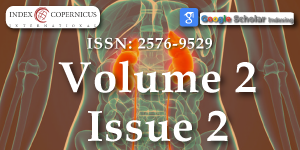Three year outcomes following positive cross match renal transplantation despite failure to convert to Negative Flow Cross Match after Desensitization
Main Article Content
Abstract
Desensitization allows successful transplantation of patients with a positive crossmatch (PXM) against their live donor. We evaluated outcomes following PXM renal transplant despite failure to convert to negative flow cytometric crossmatch (FCXM) after desensitization. Patients that underwent desensitization before PXM transplant between 1/1/00 and 11/1/11 were identified for analysis. Patients who received a transplant despite failure to convert to negative FCXM were identified as the not converted group. Patients who converted to negative FCXM after desensitization comprised the converted group control arm. 108 patients were desensitized before PXM transplant, (not converted group=42; converted group=66). Mean eGFR was comparable between groups at all time points, and 3-year eGFR was 57.8 mL/min vs. 57.1 mL/min, p=0.91. Patients with eGFR < 30mL/min at 3 years did not differ significantly (28% vs. 14%, p=0.15). Biopsy-proven rejection rates were numerically higher within the not converted group for each type of rejection and time point, but the values did not differ significantly. Opportunistic infections rates were comparable. Patient survival (95% vs. 91%) and death-censored allograft survival (84% vs. 95%, p=0.07) were similar between arms at 3 years post-transplant.
Article Details
Copyright (c) 2018 Patel S, et al.

This work is licensed under a Creative Commons Attribution 4.0 International License.
Wolfe RA, Ashby VB, Milford EL, Ojo AO, Ettenger RE, et al. Comparison of mortality in all patients on dialysis, patients on dialysis awaiting a transplant, and recipients of a first cadaveric transplant. N Engl J Med. 1999; 341: 1725-1730. Ref.: https://tinyurl.com/yadlz3xa
Annual Report of the U.S. Organ Procurement and Transplantation Network and the Scientific Registry of Transplant Recipients: Transplant Data 1998-2011. Department of Health and Human Services, Health Resources and Services Administration, Healthcare Systems Bureau, Division of Transplantation, Rockville, MD; United Network for Organ Sharing, Richmond, VA; University Renal Research and Education Association, Ann Arbor, MI. 2011.
Gloor J, Stegall MA. Sensitized renal transplant recipients: current protocols and future directions. Nat Rev Neprol. 2010; 6: 297-306. Ref.: https://tinyurl.com/ybwnh996
Claas FH, Doxiadis II. Management of the highly sensitized patient. Curr Opin Immunol. 2009; 21: 569-572. Ref.: https://tinyurl.com/ya2hk4uo
Warren DS, Robert MA. Incompatible kidney transplantation: lessons from a decade of desensitization and paired kidney exchange. Immunol Res. 2010; 47: 257-264. Ref.: https://tinyurl.com/yacwt7f2
Organ Procurement and Transplant Network Web Site. 2013.
Montgomery RA, Lonze BE, King KE, Edward Kraus S, Lauren Kucirka M, et al. Desensitization in HLA-incompatible kidney recipients and survival. N Engl J Med. 2011; 365: 318-326. Ref.: https://tinyurl.com/y9t75dyb
West-Thielke P, Herren H, Thielke J, Oberholzer J, Sankary H, et al. Results of positive crossmatch transplantation in African American renal transplant recipients. Am J Transplant. 2008; 8: 348-354. Ref.: https://tinyurl.com/ybrpqjal
Thielke JJ, West-Thielke PM, Herren HL, Bareato U, Ommert T, et al. Living donor kidney transplantation across positive crossmatch: the University of Illinois at Chicago experience. Transplantation. 2009; 87: 268-273. Ref.: https://tinyurl.com/ybyn9roc
Jordan SC, Tyan D, Stablein D, McIntosh M, Rose S, et al. Evaluation of intravenous immunoglobulin as an agent to lower allosensitization and improve transplantation in highly sensitized adult patients with end-stage renal disease: Report of the NIH IGO2 trial. J Am Soc Nephrol.2004; 15: 3256-3262. Ref.: https://tinyurl.com/y7ckwke2
Jordan SC, Vo A, Bunnapradist S, Toyoda M, Peng A, et al. Intravenous immune globulin treatment inhibits crossmatch positivity and allows for successful transplantation of incompatible organs in living donor and cadaver recipients. Transplantation. 2003; 76: 631-636. Ref.: https://tinyurl.com/y9dukjqm
US Renal Data System, USRDS. Annual Data Report: Atlas of Chronic Kidney Disease and End-Stage Renal Disease in the United States, National Institutes of Health, National Institute of Diabetes and Digestive and Kidney Diseases, Bethesda, MD, 2011.
Vo AA, Peng A, Toyoda M, Kahwaji J, Cao K, et al. Use of intravenous immune globulin and rituximab for desensitization of highly HLA-sensitized patients awaiting kidney transplantation. Transplantation. 2010; 89: 1095-1102. Ref.: https://tinyurl.com/y72o99cc
Stegall MD, Gloor J, Winters JL, Moore SB, Degoey S. A comparison of plasmapheresis versus high-dose IVIG desensitization in renal allograft recipients with high levels of donor specific alloantibody. Am J Transplant. 2006; 6: 346-351. Ref.: https://tinyurl.com/y8mlat2f
Magee CC, Felgueiras J, Tinckam K, Malek S, Mah H, et al. Renal transplantation in patients with positive lymphocytotoxicity crossmatches: one center's experience. Transplantation. 2008; 86: 96-103. Ref.: https://tinyurl.com/y6v3wbbd
Montgomery RA, Zachary AA. Transplanting patients with a positive donor-specific crossmatch: a single center's perspective. Pediatr Transplant. 2004; 8: 535-542. Ref.: https://tinyurl.com/y7vcnygh
Truong LD, Barrios R, Adrogue HE, Gaber LW. Acute antibody-mediated rejection of renal transplant: pathogenetic and diagnostic considerations. Arch Pathol Lab Med. 2007; 131:1200-1208. Ref.: https://tinyurl.com/y7jv4vsj
Hirsch HH, Randhawa P. AST Infectious Diseases Community of Practice. BK virus in solid organ transplantation. Am J Transplant. 2009; 9: 136-146. Ref.: https://tinyurl.com/yag92tsd
Humar A, Snydman D. AST Infectious Diseases Community of Practice. Cytomegalovirus in solid organ transplant recipients. Am J Transplant. 2009; 9: 78-86. Ref.: https://tinyurl.com/y9g5adqs

